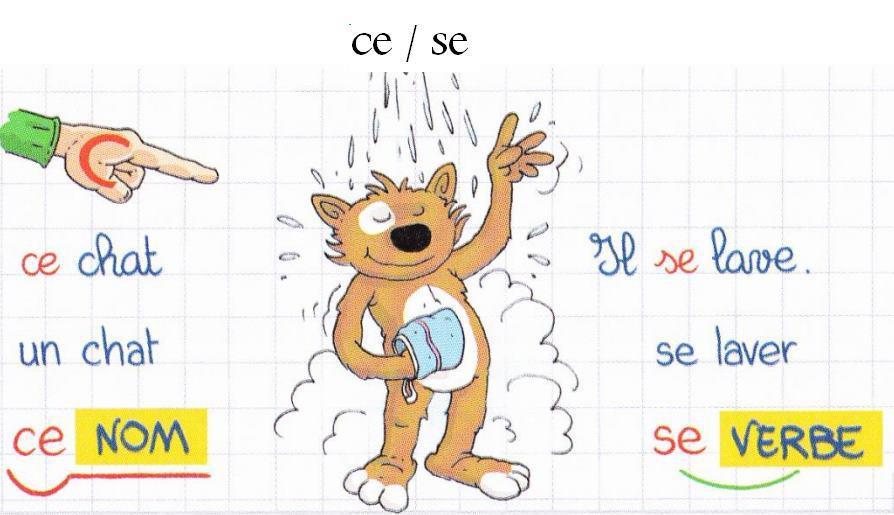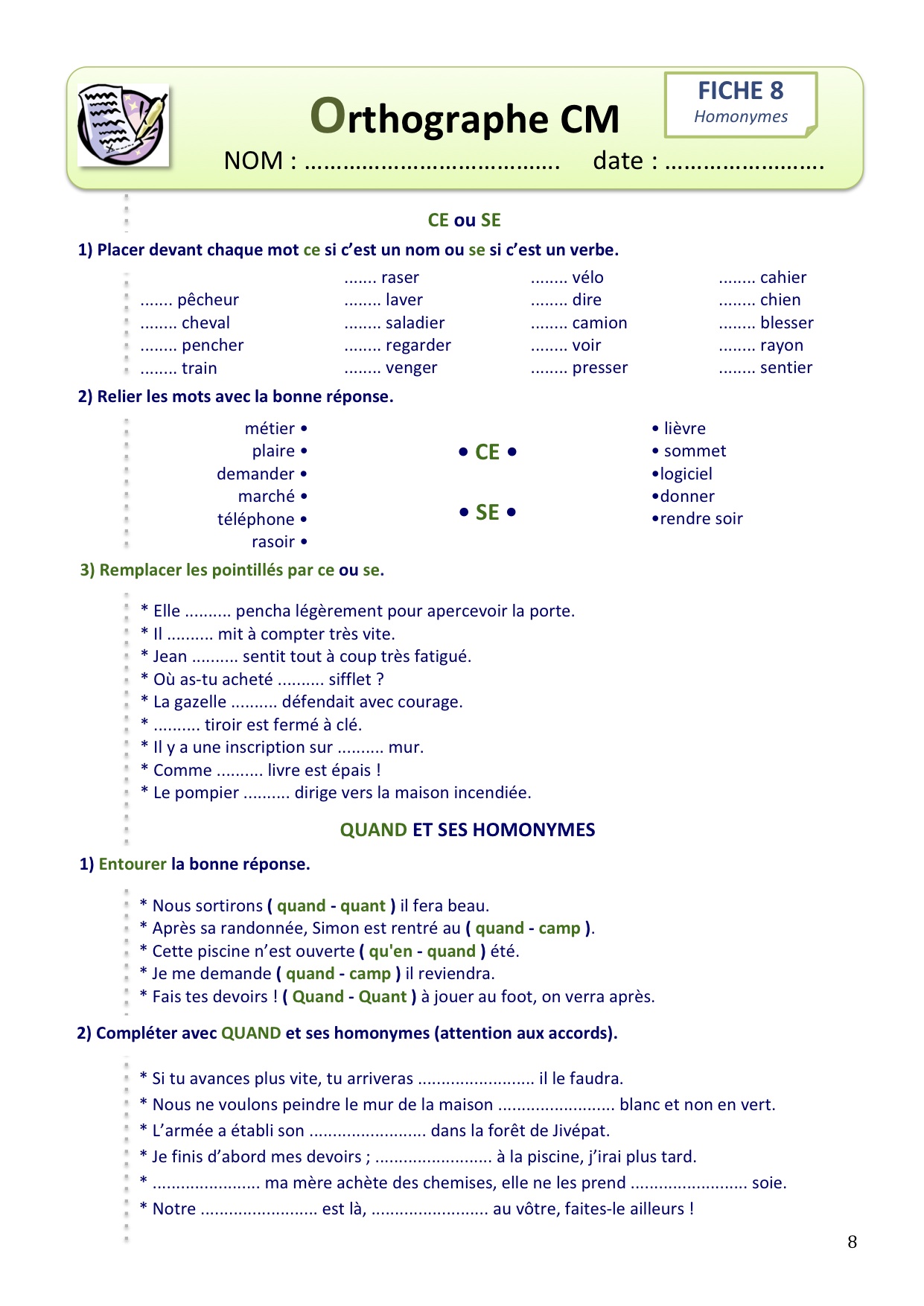Ce Et Se: A Comprehensive Guide To Understanding This Linguistic Phenomenon
Have you ever stumbled upon the terms "ce" and "se" while exploring the French language and wondered what they mean? Well, buckle up because we're diving headfirst into the world of French pronouns, and trust me, it's going to be an exciting ride. These two little words might seem simple, but they pack a punch when it comes to grammar. So, let's break it down and make sense of ce et se together.
Now, before we get into the nitty-gritty, let's talk about why understanding "ce" and "se" is crucial. Whether you're a language enthusiast or someone trying to master French for travel, work, or school, getting these pronouns right can make a huge difference. Imagine walking into a café in Paris and using the correct form of "ce" or "se" in your order. The locals might just give you a nod of approval.
What makes "ce et se" even more fascinating is how versatile they are. They can change their form depending on the context, the gender of the noun, and even the verb they're working with. It's like having a secret code that unlocks the mysteries of French communication. So, are you ready to crack the code?
What Are Ce Et Se?
Let's start with the basics. "Ce" and "se" are demonstrative pronouns in French. Think of them as the equivalent of "this" and "that" in English. But here's the twist—they don't always translate directly, and their usage can vary depending on the situation. "Ce" typically refers to something close to the speaker, while "se" points to something farther away. Cool, right?
Key Characteristics of Ce
When we talk about "ce," we're usually referring to something that's nearby or relevant to the conversation. For example, if you're holding a book and want to say "this book," you'd use "ce livre." Here are some quick points to keep in mind:
- It can function as both a pronoun and an adjective.
- It changes form based on the gender and number of the noun it refers to.
- Common variations include "cet" (before a vowel or mute "h") and "ces" (plural form).
Key Characteristics of Se
On the other hand, "se" is all about distance. If "ce" is "this," then "se" is "that." For instance, if you're pointing to a building across the street, you'd say "se batiment." Here's what makes "se" unique:
- Remotely Ssh Into Iot Devices Secure Access Control
- Kristy Althaus Porn Lawsuits Scandal What You Need To Know
- It's used to refer to something farther away from the speaker.
- Like "ce," it adapts to the gender and number of the noun.
- It's less commonly used in everyday speech compared to "ce."
How to Use Ce Et Se in Sentences
Now that we've covered the basics, let's dive into how these pronouns work in real-life sentences. Understanding their usage will help you sound more natural when speaking French. Here's a breakdown:
Using Ce in Context
Imagine you're at a farmer's market, and you want to ask about a particular fruit. You'd say, "C'est quel fruit?" which translates to "What's this fruit?" Notice how "ce" becomes "c'" before a vowel sound. That's a rule you'll want to remember.
Using Se in Context
Let's switch gears and pretend you're admiring a distant landmark. You could say, "Se chateau est magnifique," meaning "That castle is beautiful." Here, "se" emphasizes the distance between you and the castle.
Common Mistakes with Ce Et Se
Even the most fluent French speakers make mistakes with "ce" and "se." The key is to practice and learn from errors. Here are some common pitfalls to avoid:
- Confusing "ce" and "se" based on proximity.
- Forgetting to adapt the form to the gender and number of the noun.
- Not recognizing when "ce" becomes "c'" in front of vowels.
Practical Tips for Mastering Ce Et Se
Ready to level up your French skills? Here are some practical tips to help you master "ce et se":
Tip #1: Practice with Everyday Objects
Take a look around your room and try labeling things using "ce" and "se." For example, "Ce stylo est bleu" (This pen is blue) or "Se chaise est rouge" (That chair is red). It's a fun and effective way to reinforce learning.
Tip #2: Read French Texts
Immerse yourself in French literature or online articles. Pay attention to how native speakers use "ce" and "se" in different contexts. You'll start noticing patterns and gaining confidence in no time.
Tip #3: Engage in Conversations
Nothing beats real-life practice. Find a language partner or join a French-speaking group. The more you use "ce et se" in conversations, the more natural it will feel.
The Importance of Ce Et Se in French Grammar
Why do "ce" and "se" matter so much in French grammar? Well, they're part of the foundation that holds the language together. Without them, expressing proximity, distance, and relationships between objects would be a lot harder. Here's why they're essential:
- They clarify meaning and avoid confusion.
- They add depth and nuance to your sentences.
- They demonstrate your understanding of French structure.
Common Variations of Ce Et Se
Just when you thought you had "ce" and "se" figured out, there are variations to consider. Don't worry—it's not as complicated as it sounds. Here's a quick rundown:
Ce vs Cet vs Ces
"Ce" has a few alter egos depending on the context. When followed by a vowel or mute "h," it becomes "cet." For example, "Cet homme est intelligent" (This man is smart). In plural form, it transforms into "ces," as in "Ces livres sont interessants" (These books are interesting).
Se vs Sa vs Ses
Similarly, "se" has its own set of variations. While "se" is used for singular nouns, "sa" can appear before feminine singular nouns, and "ses" is the plural form. For example, "Sa voiture est rouge" (Her/His car is red) and "Ses amis sont sympas" (Her/His friends are nice).
Real-Life Examples of Ce Et Se
To truly understand "ce et se," let's look at some real-life examples. These scenarios will help you see how these pronouns work in different situations:
Example #1: At the Restaurant
Imagine you're dining with friends, and you want to point out a dish on the menu. You could say, "Ce plat est delicieux" (This dish is delicious) or "Se vin est parfait" (That wine is perfect). Notice how the pronouns change based on proximity.
Example #2: In a Museum
While admiring artwork, you might comment, "Ce tableau est magnifique" (This painting is beautiful) or "Se statue est impressionnante" (That statue is impressive). Again, the choice depends on how close or far the object is from you.
Why Mastering Ce Et Se Matters
Mastering "ce et se" isn't just about grammar—it's about communication. When you use these pronouns correctly, you're showing respect for the French language and its nuances. Plus, it makes you sound more fluent and confident. Here's why it matters:
- It enhances your ability to express yourself clearly.
- It helps you connect with native speakers on a deeper level.
- It opens doors to new opportunities, whether personal or professional.
Conclusion
And there you have it—a comprehensive guide to understanding "ce et se" in French. From their basic definitions to their practical applications, these pronouns play a vital role in the language. Remember, mastering them takes practice and patience, but the rewards are worth it.
So, what's next? Start incorporating "ce" and "se" into your daily conversations. Practice with everyday objects, read French texts, and engage with native speakers. The more you use them, the more natural they'll feel. And don't forget to share your progress with us in the comments below. We'd love to hear about your language journey!
Table of Contents:
- What Are Ce Et Se?
- Key Characteristics of Ce
- Key Characteristics of Se
- How to Use Ce Et Se in Sentences
- Common Mistakes with Ce Et Se
- Practical Tips for Mastering Ce Et Se
- The Importance of Ce Et Se in French Grammar
- Common Variations of Ce Et Se
- Real-Life Examples of Ce Et Se
- Why Mastering Ce Et Se Matters



Detail Author:
- Name : Keon Stamm
- Username : isaiah41
- Email : daron69@schimmel.biz
- Birthdate : 2002-02-21
- Address : 19598 Crooks Port Port Antwan, NV 22008
- Phone : +1.626.768.0841
- Company : Walter Ltd
- Job : Sociology Teacher
- Bio : Tempora dolor sunt cupiditate voluptas qui molestiae. Minus non voluptatem vel repellat perspiciatis iusto. Repudiandae sint occaecati quo quam aut cumque.
Socials
tiktok:
- url : https://tiktok.com/@davin_dev
- username : davin_dev
- bio : Facere voluptatem eum consequatur in magni.
- followers : 3939
- following : 2217
facebook:
- url : https://facebook.com/smithd
- username : smithd
- bio : Qui porro nemo fugiat sapiente voluptas eveniet.
- followers : 4007
- following : 1941
twitter:
- url : https://twitter.com/smithd
- username : smithd
- bio : Iure sed esse sequi optio ut quos. Necessitatibus ullam similique accusantium. Autem ut saepe qui aspernatur quis.
- followers : 4841
- following : 463